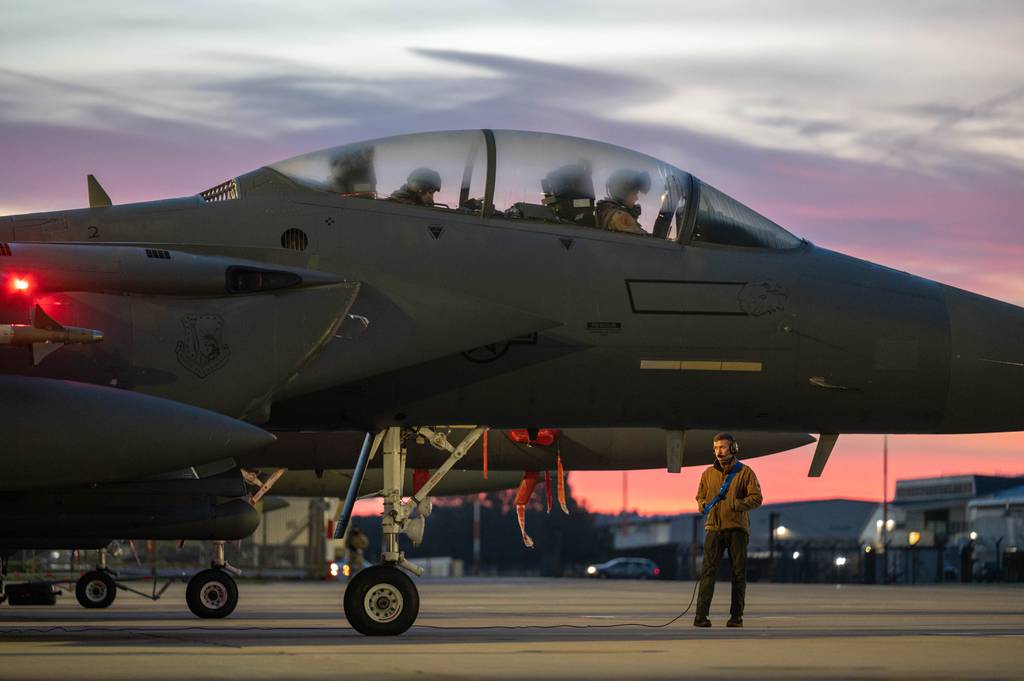
The U.S. Air Force’s $3.5 billion budgetary wish list for fiscal 2025 includes more funds for spare parts to get grounded planes back in the air, and seeks resources to be able to deploy more personnel and fighter jets.
The unfunded priorities list the service submitted to Congress, dated March 21, asks for another $1.5 billion to restock spare parts; $612 million to create nine new deployable units called mission generation force elements; $1.1 billion for construction projects worldwide; and $266 million to fund exercises in the Pacific region.
The Air Force did not ask Congress for additional funds to buy more aircraft, as it sometimes has in previous years’ unfunded priorities lists. The service’s $188.1 billion budget request for FY25 trims six F-35A Joint Strike Fighters and six F-15EX Eagle II fighters from what it originally planned, and the wish list does not aim to change that.
In the unfunded priorities list, the Air Force said its additional $1.5 billion request for spare parts — the largest component in the list — is necessary because the tight budget environment prevented it from asking for all the parts it needed.
The spare parts request asks for:
- $167 million for B-52H Stratofortress bombers.
- $564 million for F-16 Fighting Falcon jets.
- Nearly $61 million for F-15E Strike Eagle jets.
- Nearly $62 million for the HC-130J Combat King personnel recovery aircraft.
- $195 million for RC-135 intelligence aircraft.
- $7 million for C-130J Super Hercules cargo planes.
- Almost $450 million for the KC-135 Stratotanker aerial refueling plane.
The service also said its $612 million request to create new mission generation force elements would allow it to deploy as many as 208 additional combat-coded fighters.
Mission generation force elements are part of the service’s new Air Force Generation deployment concept, which allow it to send fighter aircraft overseas. Those elements include both the equipment, jets and airmen needed to fly and maintain the aircraft. They also include munitions operations, weather-tracking capabilities, and intelligence and cyber capabilities.
This request would cover a one-time purchase of spare parts, aviation support equipment and munitions support equipment. But the elements would be created using personnel and fighters already in the service, and the funds would not pay for more jets or airmen.
The Air Force said its $1.1 billion request for additional construction funds would allow it to whittle down a $46.8 billion backlog on infrastructure and facilities that it needs to prepare for a potential conflict against China.
That includes $158 million for planning and design work on the Survivable Airborne Operations Center aircraft that will replace the aging E-4B Nightwatch fleet. The E-4B, nicknamed the “doomsday plane,” would allow the president to direct forces in case of a nuclear war or other devastating emergency that destroys command-and-control centers on the ground.
It also asks for another $215 million in construction funds for basic military training classrooms and a dining facility at Joint Base San Antonio-Lackland in Texas, plus $148 million for a multidomain operations complex at Beale Air Force Base in California.
The Air Force also asked for another $28 million to build infrastructure needed for the F-35 Joint Strike Fighter and the T-7A Red Hawk trainer at Hill Air Force Base in Utah.
And the service wants additional funds to allow Pacific Air Forces to conduct a theaterwide exercise to practice the Agile Combat Employment concept. That approach aims to spread out deployed airmen across more bases to make it harder for an adversary, such as China, to destroyer large portions of the force.
After the first theaterwide Agile Combat Employment exercise in 2025, the Air Force wants to keep holding those drills every other year, and plans to use $5 million to plan and prepare for them.
Author: Stephen Losey
Source: DefenseNews



